In this tactical analysis, we take a closer look at the build-up play and explain how opposition pressing triggers can be exploited to overcome the press. Therefore, we analyse the most common pressing triggers and their influence on available space and passing lanes in our tactical theory piece.
Cover-shadow exploitation
In order to find solutions to overcome the opposition press, one needs to examine the consequences of pressing triggers on the available space and passing options. On an individual level, an advantage that appears due to pressing triggers is the shrinkage of the cover-shadow of pressing players. In the following, we explain the reasons for the decrease of space covered by the cover-shadow during the press.
The idea behind the concept of the cover-shadow is simple. A defending or pressing player always covers a certain area of the pitch as he could intercept a pass into that particular area. In terms of this covered space, it is necessary to differ between a moving player or a player holding his position. Whereas it is easier to intercept a pass from a static position, it is harder when moving. A pressing player will move towards the ball-carrier and therefore will not have both feet on the ground. This makes it harder to change directions. As a consequence, less space behind the pressing player will be covered.
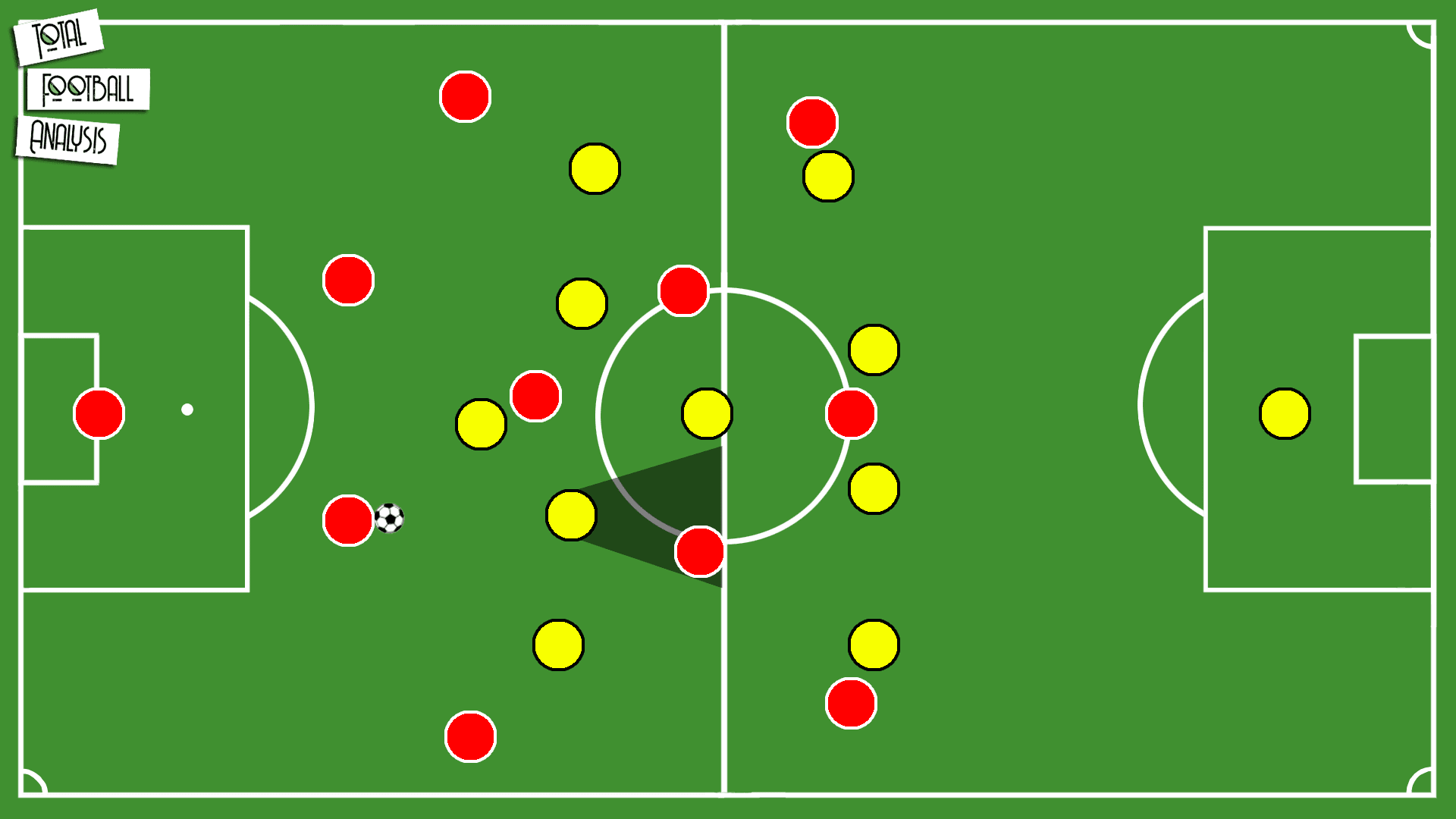
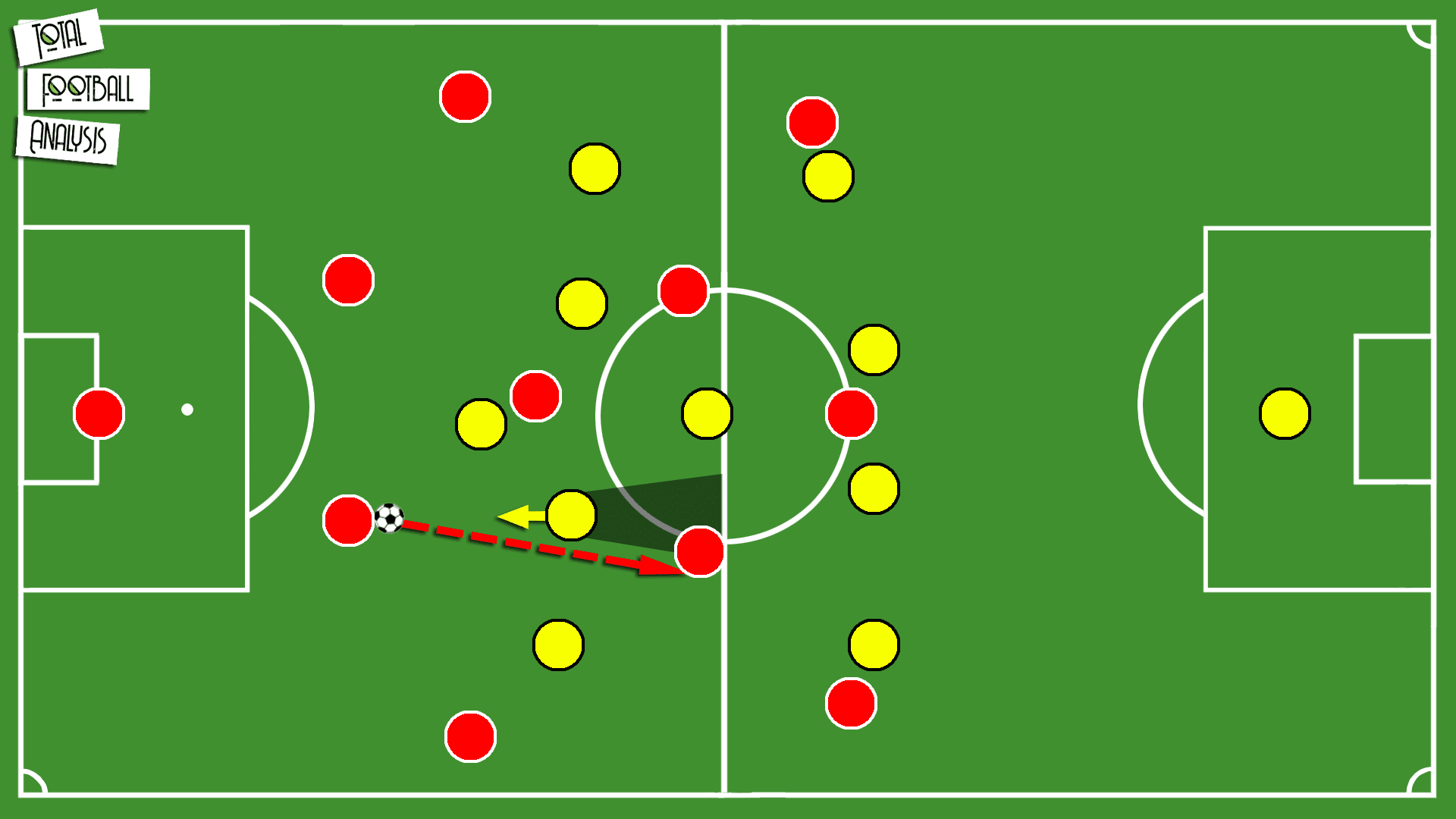
This turns players that were initially positioned within the cover-shadow into possible passing options. With these new options it can Nevertheless, these passes in few space and close to opposing players require good passing abilities and pose a certain risk to lose the ball.
Overplaying the press through open space
A pressing always opens up space in other areas of the pitch. Space-oriented defences will shift towards the ball to remain a compact shape. This opens up space in behind. If the opposition tactics include a man-oriented pressing, however, will offer an increased area of empty space between the players.
A famous, if not the most famous, pressing trigger is a pass towards the full-back. This means that the ball is on one side of the pitch. Sides using space-oriented pressing approach will then neglect the space on the far side in order to make sure to keep a compact shape around the ball.
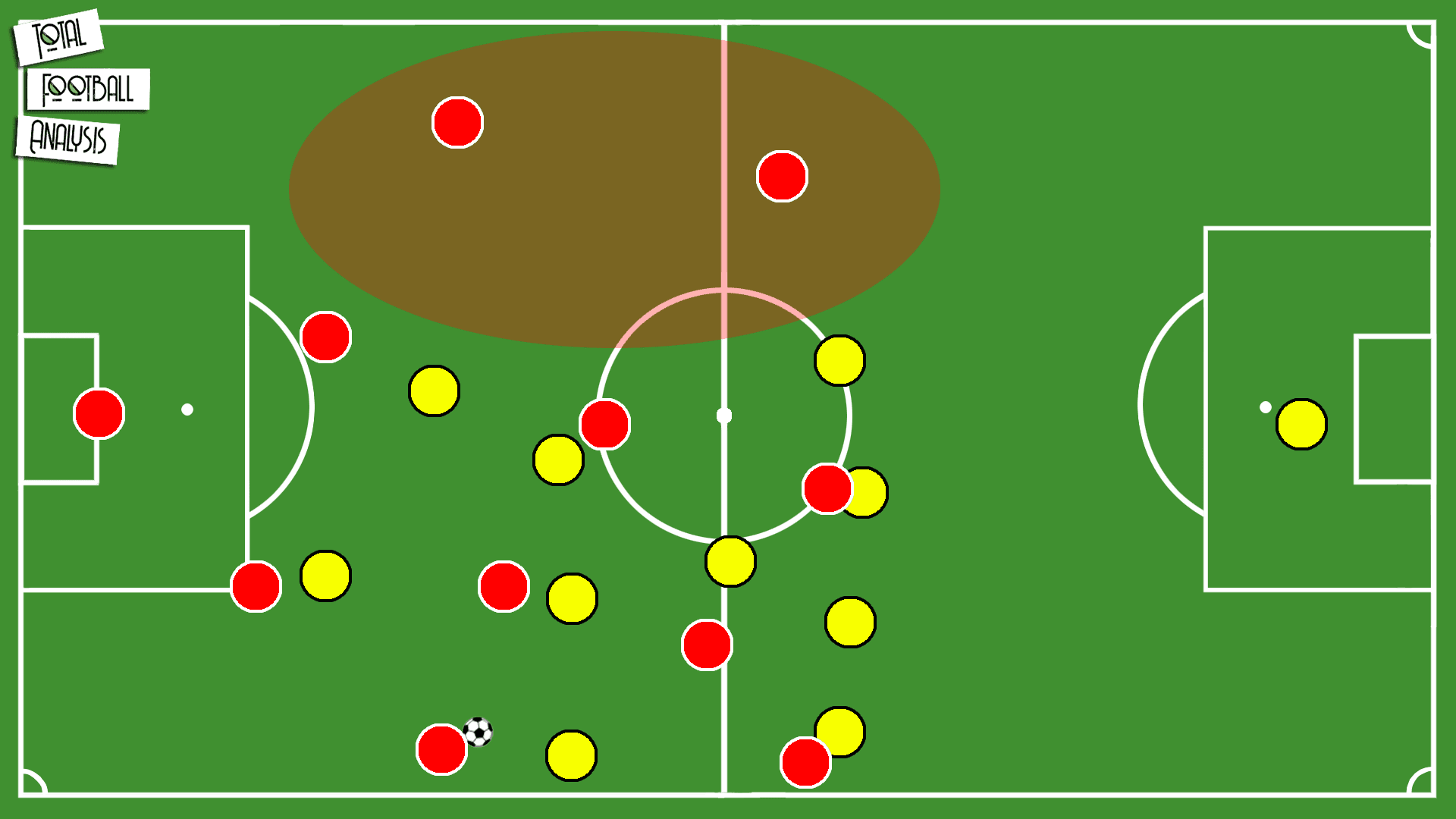
As a result, this offers the opportunity to switch sides either through a long diagonal ball or through short pass combination play.
Alternatively it can sometimes be found a spare man on the ball near side as well. If the opposition press in a man-oriented manner but fail with this approach, the build-up side will have to find this open player to overcome the press. Below, one can see Hoffenheim under Julian Nagelsmann outplaying Bayern’s press exactly that way.
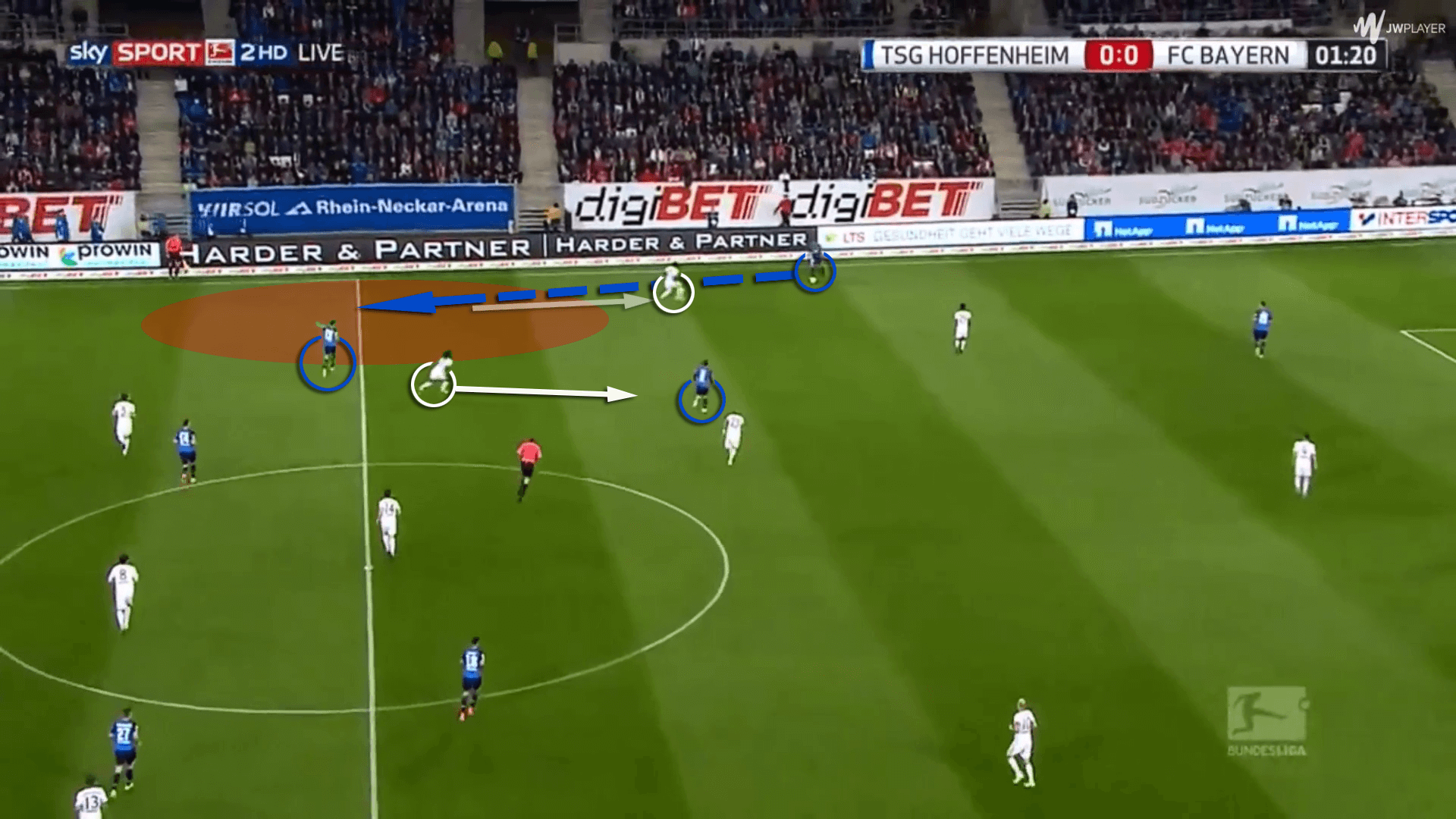
Since there is only a short window of time for the pressing side to apply pressure on the ball and shut down all options, it is possible that they commit a mistake during this procedure. Sharp and precise passes during build-up play can help to decrease the time for the opponent and therewith force them into mistakes.
Furthermore, square passes between centre-backs, like in the image below, are often seen as a promising opportunity to press.
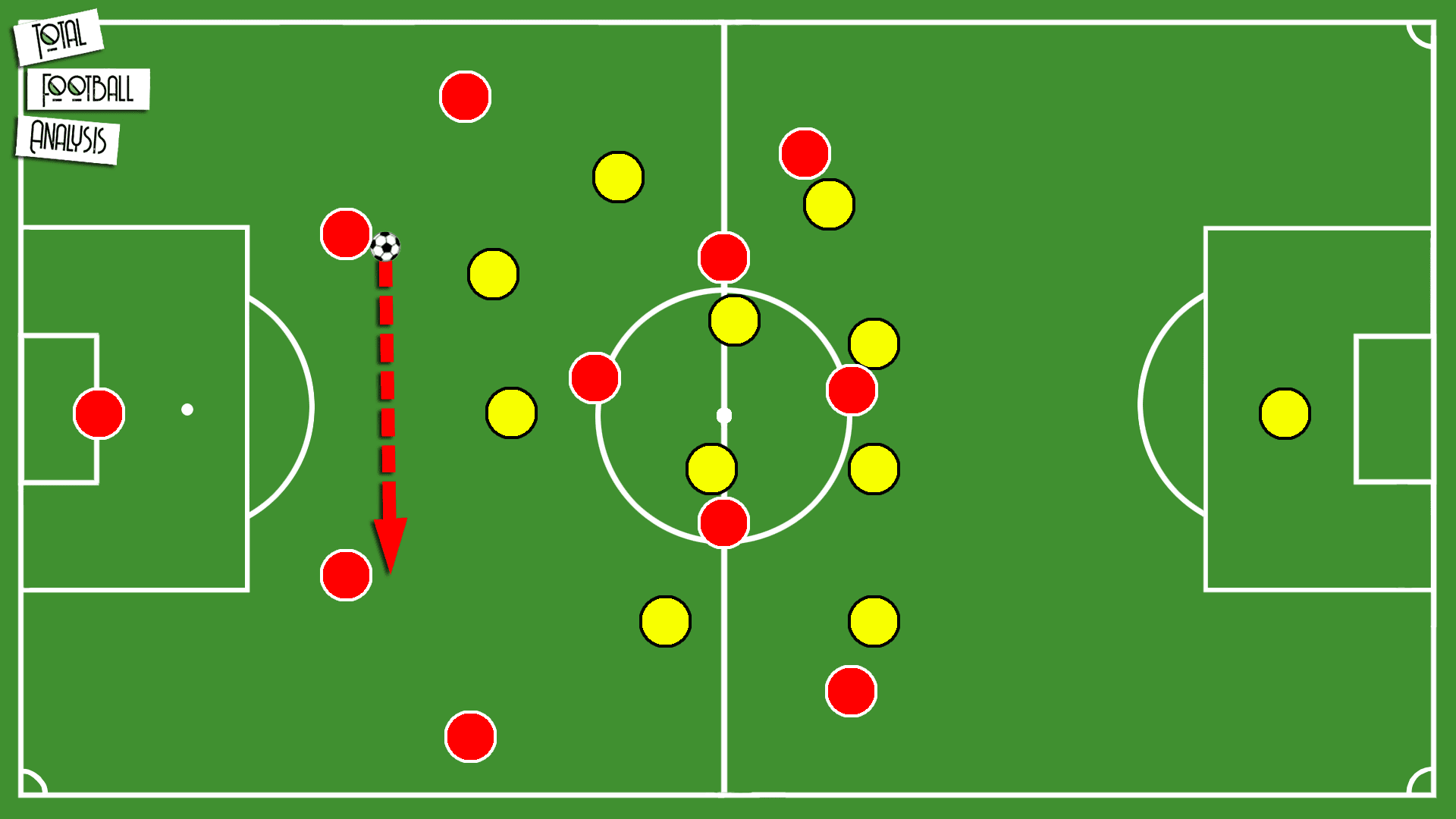
However, as the pressing team will have to both, shift forward and sideways, it allows for diagonal passes or a dribbling into midfield. Ideally, they can even dribble over the first line of press with their first touch depending on the length of the run the pressing player has to cover.
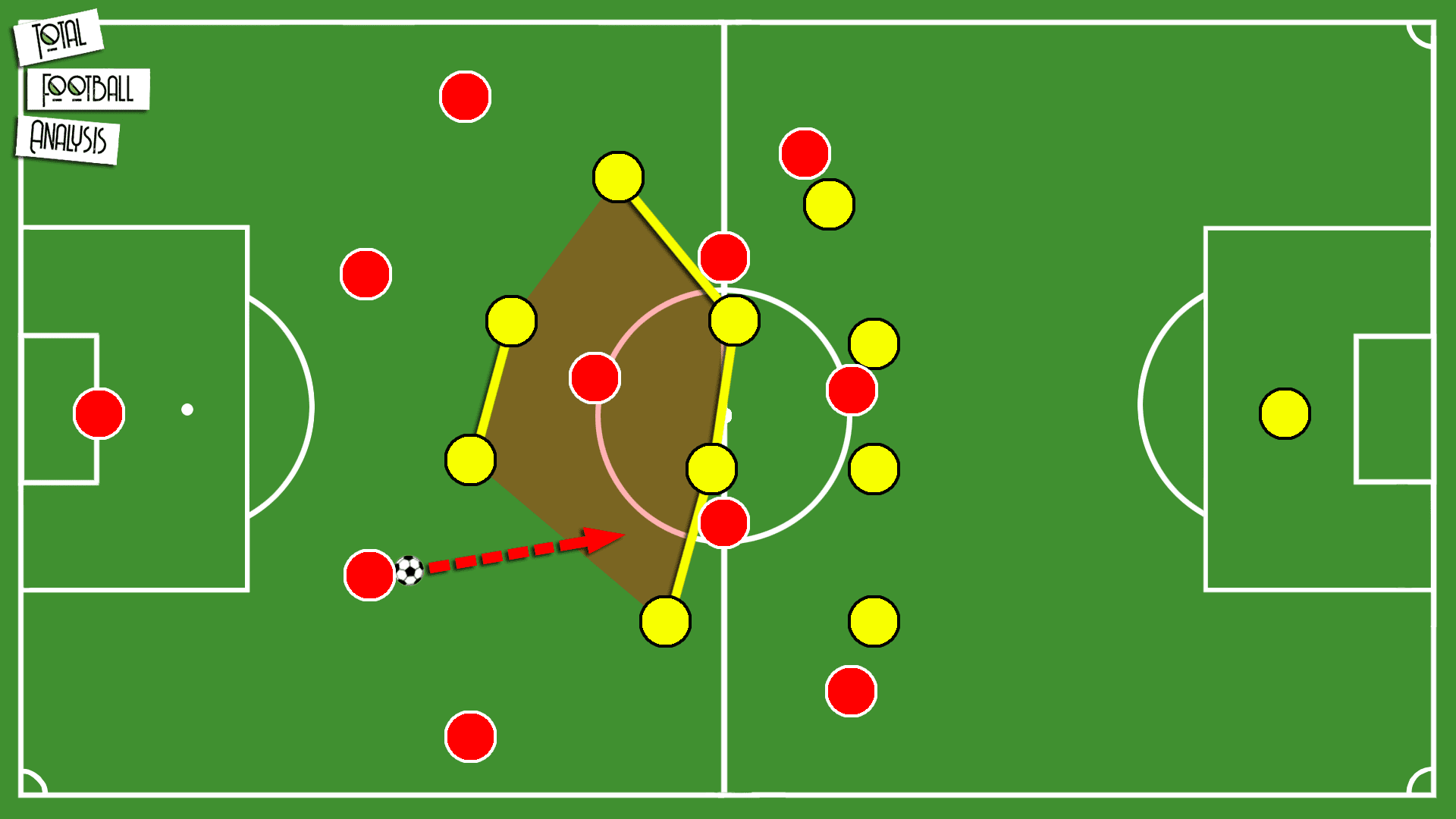
In addition to that, the shifting movement of the opposition also moves the gaps between two defending players within the same line. If players between the lines either keep their position or move differently than the opponents, they can create passing lanes even if they were initially taken out of the game positioned behind opposing players as displayed below.
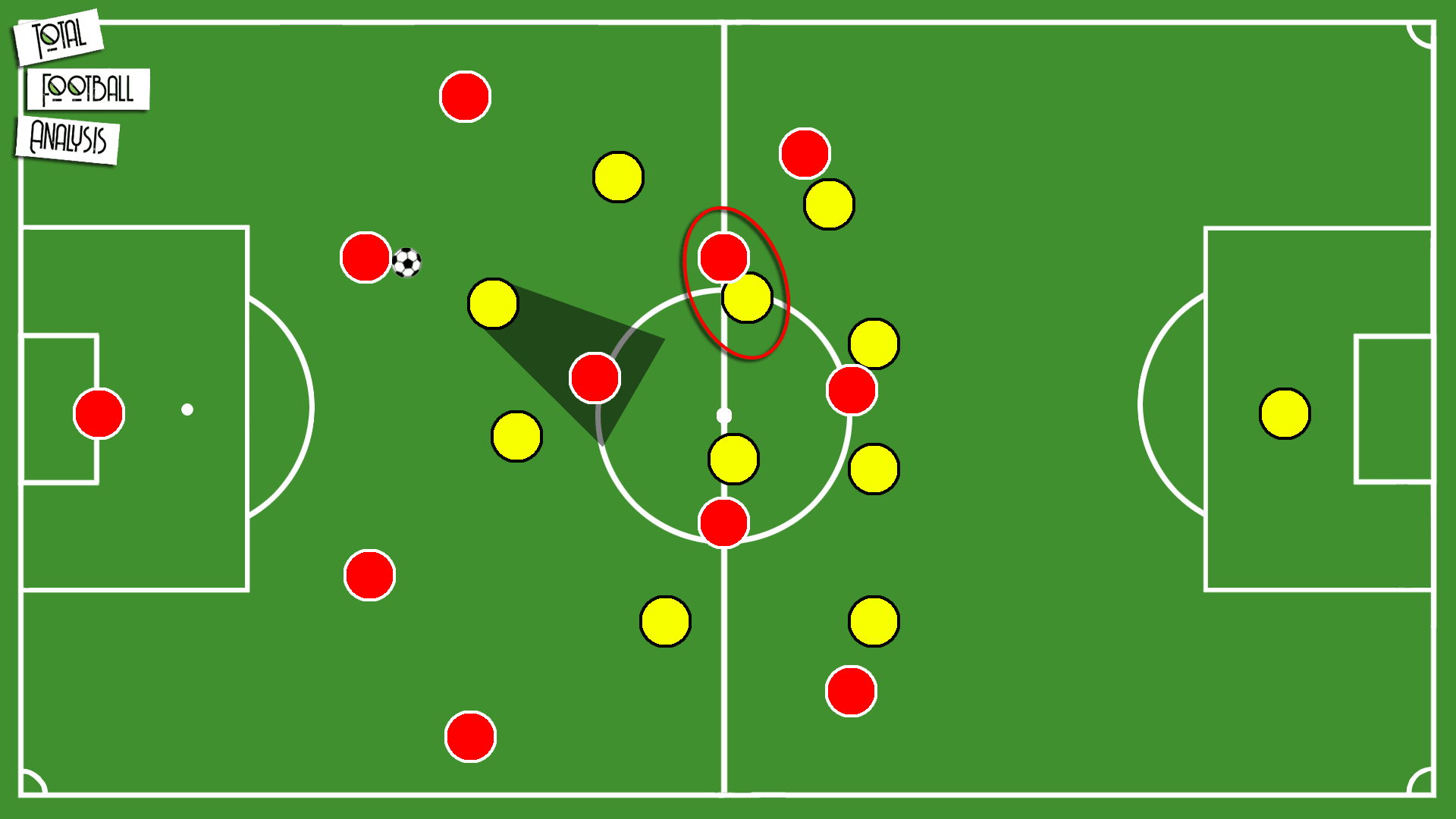
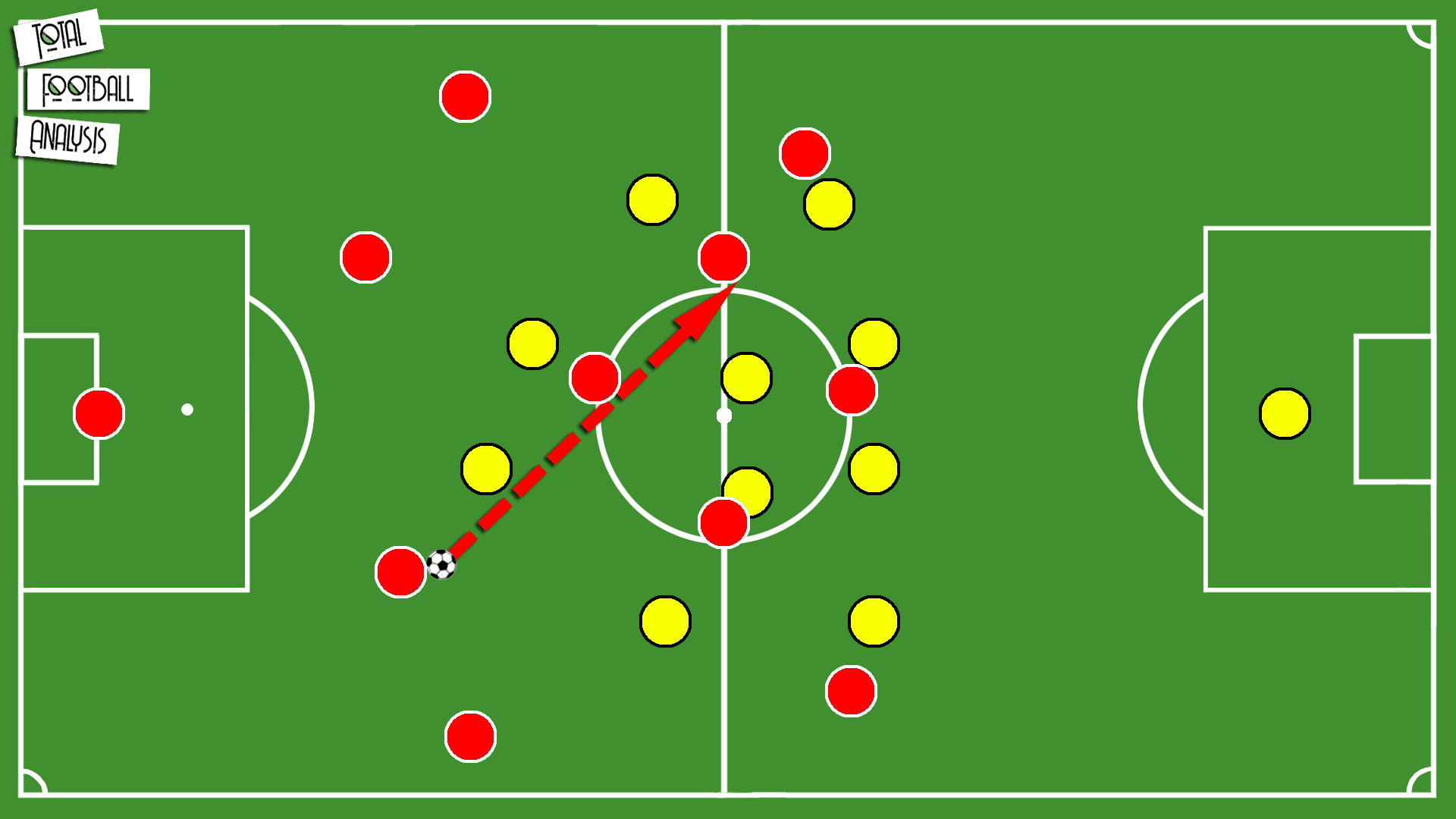
Overplaying the press vertically with a dynamic advantage
Back passes, for instance, are a popular pressing trigger for many sides as well. When the build-up team play the ball backwards, they will move higher up the pitch and press. This pressing trigger often enables to press players who then receive the next pass with poor pre-orientation from the blind side. However, at the same time, it allows the build-up team to exploit the forward movement of the pressing side and to create a dynamic advantage. At the moment of moving forward, it is more difficult to defend the space in behind for every single player. A way of exploiting this are up-back combinations.
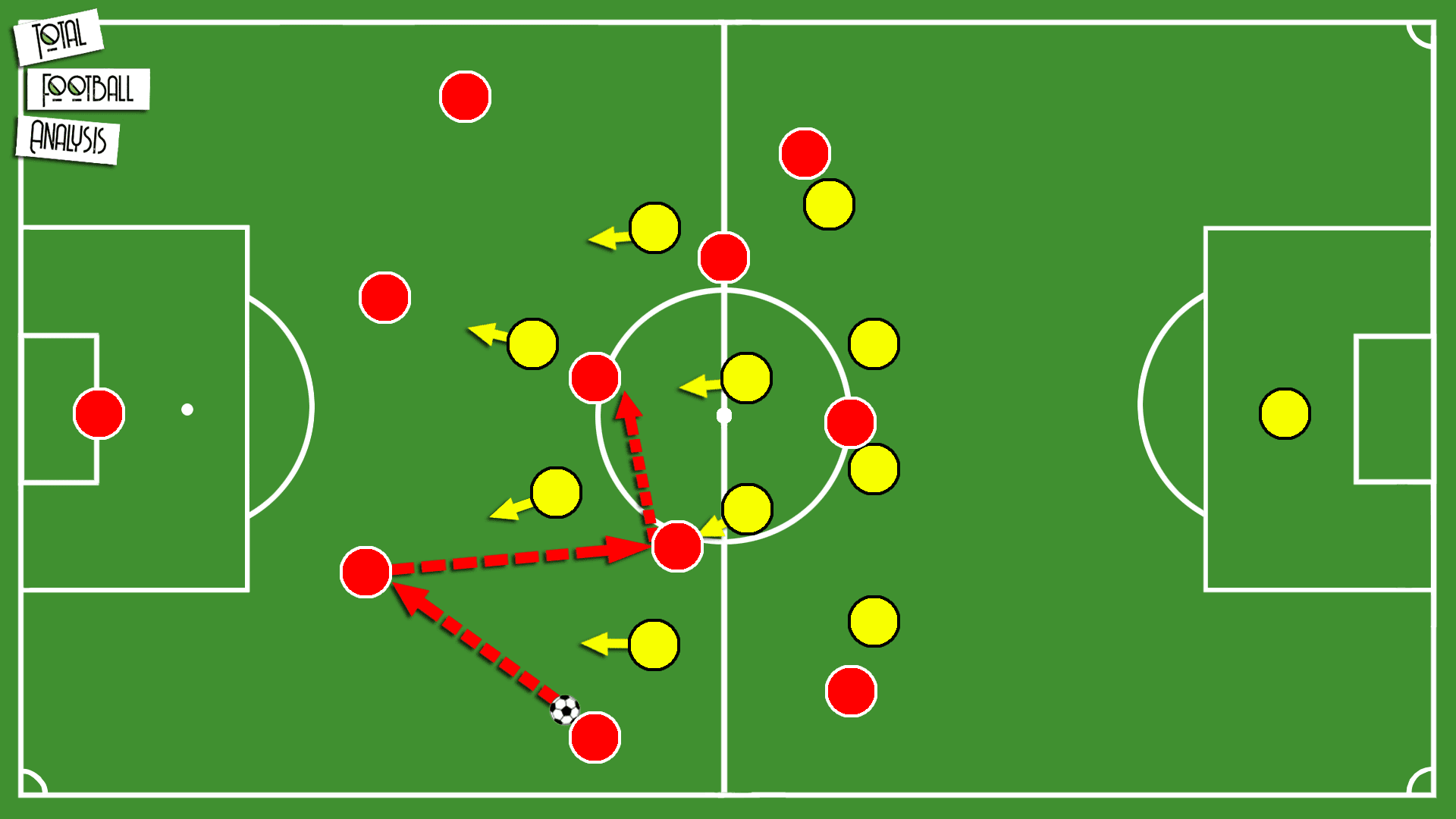
To use back passes to attract pressure and, at the same time, stretch the opposition vertically is a common phenomenon of Maurizio Sarri’s teams. Whether at Napoli, where his style of play became well known as “vertical tiki-taka” or at Chelsea, the Italian manager utilised these back passes to lure the opposition into a press which they can then quickly overplay through short pass combinations. And if there is no space between the lines offered than the space behind the opposition back line can be exploited with a long ball. And if there is no space between the lines offered than the space behind the opposition back line can be exploited with a long ball.
Below we can see an example from Spain building up play against Germany.
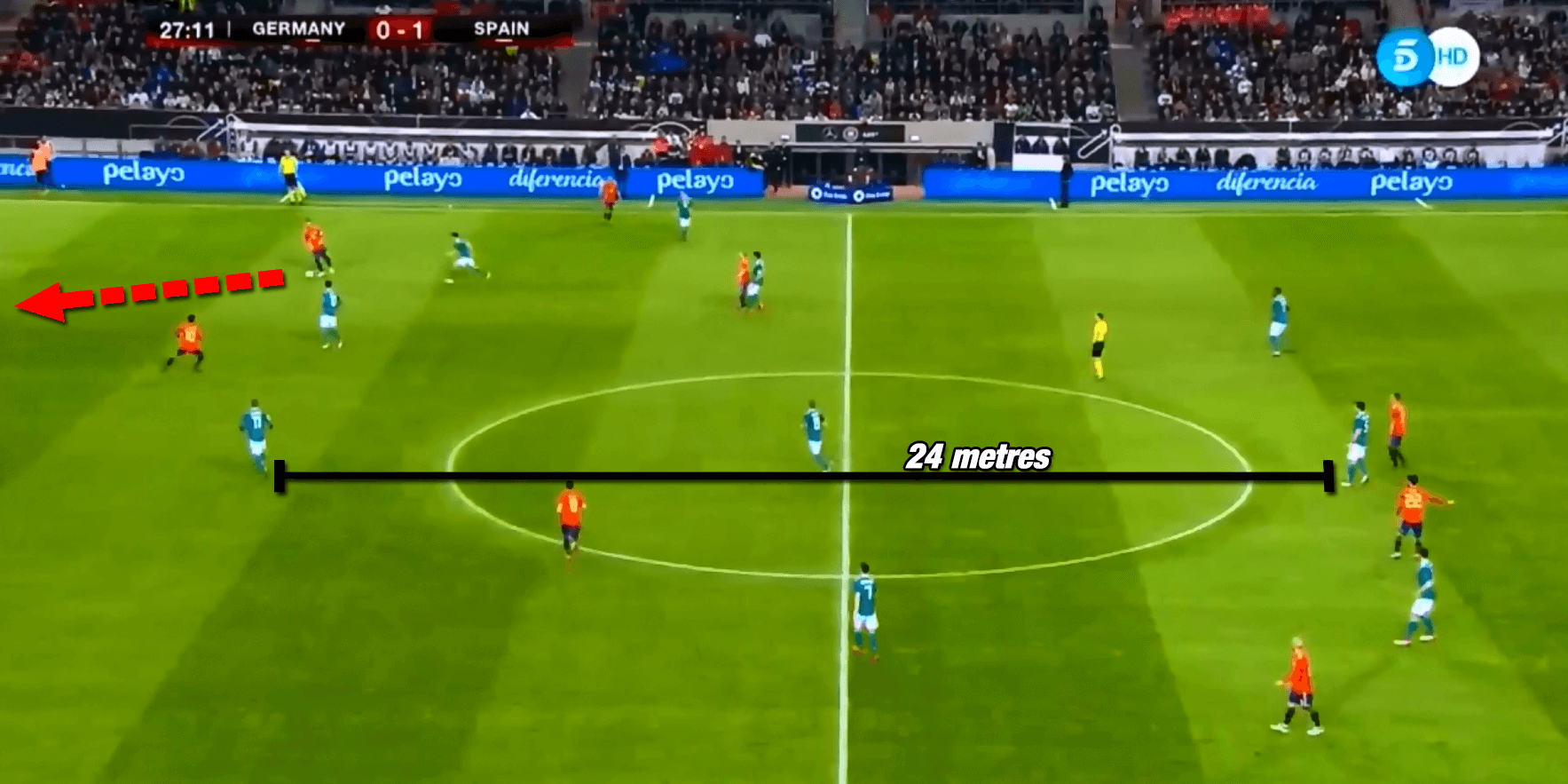
With a back pass they stretch the shape of the opposition. That way, they can even create a 2v1 in the pivot space which enables them to successfully play out from the back.
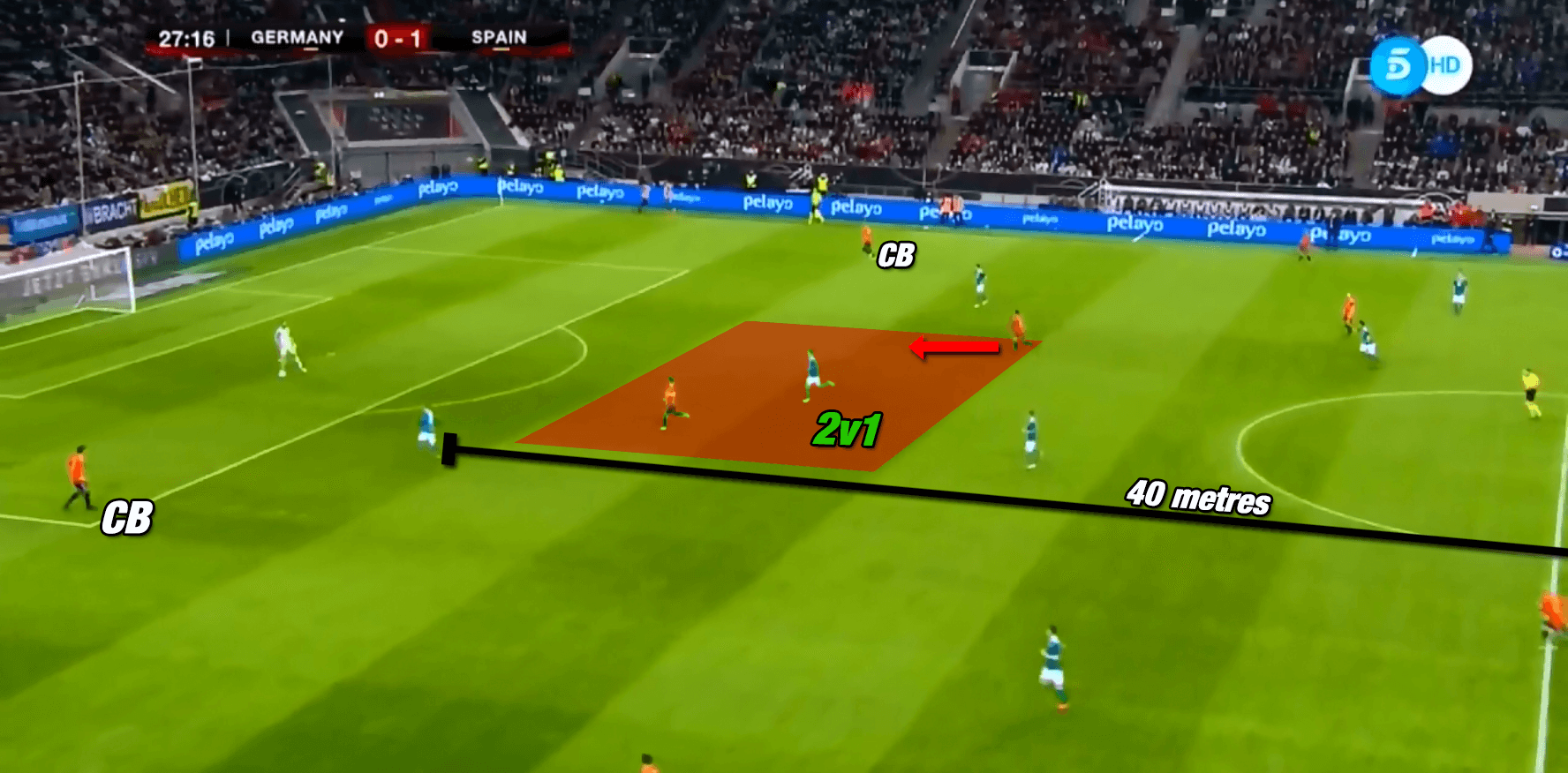
Overplaying the press through an individual advantage
When the opposition attempt to press in central areas, they will often use a pass into a midfielder with a closed body shape as a pressing trigger. That way, they try to take advantage of a lack of orientation and passing options due to the body shape. If the receiving midfielder is aware of the press, however, this pressing movement can be exploited with a good first touch.
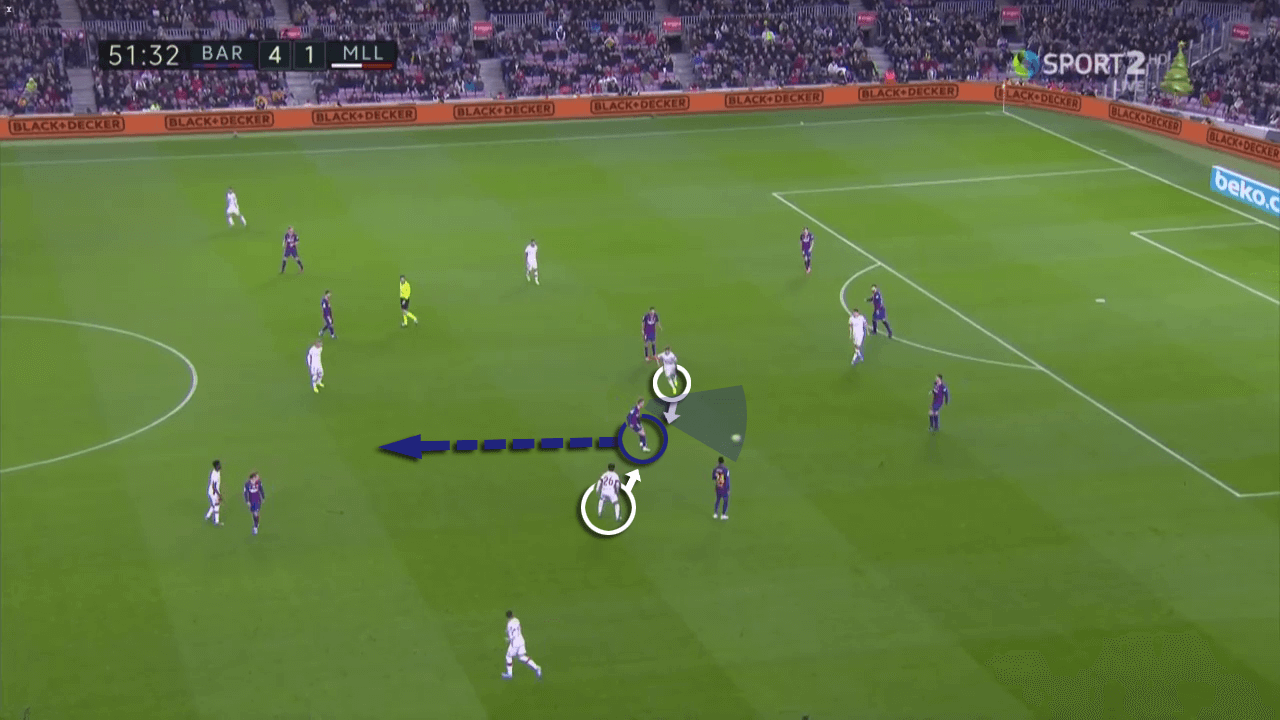
Players such as Bayern Munich‘s pivot Thiago or Barcelona midfielder Frenkie de Jong are true weapons when it comes to beating the press through dribbling though. They even benefit from opposition midfielders moving forward to press them as this allows them to outplay their opponent using body feints or other deceptive actions. Again, they will have a dynamic advantage over the opposition who is moving in another direction. Simple rules of physics disable the opponent to accelerate into the opposite direction faster than the receiving player from a static position.
With the opposition having started their press and therewith moving up the pitch, they are vulnerable if being overplayed. Through penetrating the opposition just after the pressing trigger pass can therefore allow for promising attacks. That makes the presented ways of exploiting opposition pressing triggers very valuable.
Conclusion
All in all, pressing triggers are a powerful tool for the pressing team. Nevertheless, pressing is always connected with certain risks. During build-up play, opposition pressing triggers can be exploited if one is well prepared for certain pressing scenarios.
As explained in our analysis, especially dribbling can be of huge advantage when it comes to exploiting opposition pressing triggers. Moreover, due to the opposition movement new spaces and passing lanes can open up which allow for penetration.




Comments